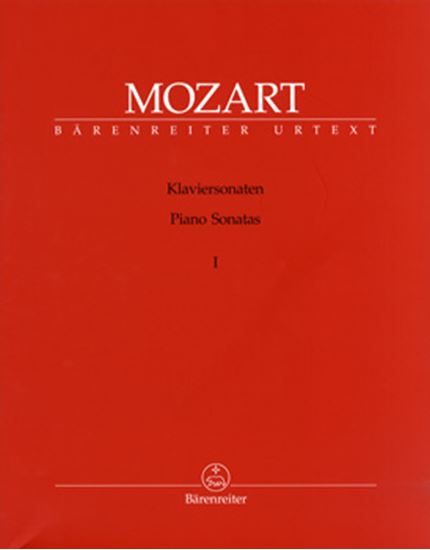Mozart, Wolfgang Amadeus : Sonate für Klavier Nr.2 Mov.2 Adagio
Work Overview
Genre:sonata
Total Playing Time:7 min 00 sec
Copyright:Public Domain
Commentary (2)
Author : Kumamoto, Ryohei
Last Updated: February 28, 2025
[Open]
Author : Kumamoto, Ryohei
Sonata Form
- Exposition
- First Subject (measures 1-8)
- Second Subject (measures 9-20)
- Closing Section (measures 21-24)
- Development
- First Subject Development (measures 25-32)
- Transition (measures 33-36)
- Recapitulation
- First Subject Recapitulation (measures 37-42)
- Second Subject Recapitulation (measures 43-56)
- Closing Section (measures 57-60)
The tonic key is F minor. The first subject features a motif reminiscent of a Siciliano rhythm, recalling the opening theme of the second movement of Piano Concerto No. 23, K. 488. It has a polyphonic structure, consisting of three or four voices.
The second subject modulates to the relative major, A-flat major, where a sixteenth-note accompaniment figure appears, making the music flow more smoothly. Unlike the polyphonic first subject, it has a simpler structure, divided into melody and accompaniment. The melodic line, punctuated by short eighth rests, becomes more expressive. In contrast to the first subject, which might be likened to an instrumental ensemble of multiple instruments, the second subject evokes a vocal piece, expressively sung against a quiet instrumental accompaniment.
Following the cadential formula in measure 12, measure 13 presents a poignant augmented sixth chord of the double dominant. The upper voice melody ascends to a diminished fifth, then weakly resolves to the dominant in the next measure. This is an emotionally rich passage.
In measure 19, a VI chord of a deceptive cadence appears at the beginning, with a dynamic marking of forte, again conveying a heightened sense of emotion.
From measure 21, whether this section should be considered a closing section or a coda is debatable. In terms of scale, it resembles a short coda; unlike a typical sonata form where a closing theme is developed in the closing section, it is simply repeated an octave lower before concluding.
The development section begins in measure 25 with a diminished seventh chord in B-flat minor. From measure 29, it is imitated in three voices, modulating to C minor. The four measures from measure 33 constitute a transitional passage where the first subject motif is developed in C minor, leading to the recapitulation.
The recapitulation begins in measure 37. At this point, the first subject is shortened to six measures, with the repetition in the latter half of the phrase omitted. The second subject is recapitulated from measure 43 in the tonic key of F minor. From measure 57, the closing section begins, concluding with a perfect cadence in the tonic key of F minor.
Author : Ooi, Kazurou
Last Updated: July 21, 2025
[Open]
Author : Ooi, Kazurou
Even among pieces in a minor key, the very choice of F minor, which carries a special significance, immediately establishes a fateful, profound mood. The piece is replete with dramatic chords, such as numerous augmented sixth chords and Neapolitan sixths, unequivocally conveying an expression of sorrow.
From measures 9 to 20, the left hand continues with arpeggios that can be pedaled without any issue. However, have you noticed that most of these arpeggios are in inversion? Only a few are written in root position. This, in essence, is a psychological depiction of constant instability.
When considering whether this piece is instrumental or vocal, it can certainly be viewed as vocal. However, dramatic and rigorous sections, akin to those of an orchestra, also emerge. The performer should determine how to differentiate between the lyrical (vocal) and orchestral sections and visualize them accordingly. For instance, one might consider measures 25-26 as having the lyrical part at the top, measure 27 as an ensemble of small-scale instruments, and measure 28 as a tutti.
PTNA & Partner Channel Videos(3items)
Sheet Music
Scores List (10)

(株)全音楽譜出版社

(株)全音楽譜出版社

(株)全音楽譜出版社

(株)音楽之友社

(株)全音楽譜出版社

ヘンレ社(ヤマハ)

(株)音楽之友社







